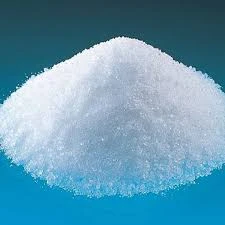The Role of Cellulose as a Raw Material in Industry
Cellulose, a natural polymer made up of glucose units, is one of the most abundant biopolymers found in nature. It is primarily derived from plant cell walls and is a key component in producing a variety of products. Given its unique properties, cellulose has gained importance as a raw material in various industries, including paper, textiles, pharmaceuticals, and biofuels.
Characteristics and Structure of Cellulose
Cellulose consists of long chains of glucose molecules linked by β-1,4-glycosidic bonds. This structural formation gives cellulose its incredible strength and resistance to degradation. The arrangement of cellulose molecules enables them to form crystalline structures, contributing to the rigidity and stability of plant cells. Because cellulose is not digestible by humans, it is categorized as a dietary fiber; however, many organisms, including bacteria and fungi, can break it down and utilize it for energy.
Applications of Cellulose in Different Industries
In the paper industry, cellulose is the fundamental raw material used to manufacture various paper products. The pulping process involves separating cellulose fibers from lignin and hemicellulose in wood. These cellulose fibers are then processed into paper pulp, which can be transformed into everything from newspapers to fine writing paper. The sustainability of cellulose as a raw material is increasingly prominent, with many companies focusing on sourcing it from renewable resources, such as managed forests and agricultural residues.
In the textile industry, cellulose is used to create fibers like cotton, viscose, and lyocell. Cotton is a natural fiber harvested directly from the cotton plant; it is favored for its breathability and comfort. On the other hand, viscose and lyocell are regenerated cellulose fibers produced through chemical processes. These fibers are known for their soft feel and ability to absorb moisture, making them popular choices in clothing production.
cellulose raw materials

The pharmaceutical industry also benefits from cellulose as an excipient, which is a substance formulated alongside the active ingredient of a medication. Cellulose derivatives—such as microcrystalline cellulose, carboxymethyl cellulose, and hydroxypropyl methylcellulose—are used to enhance the stability, bioavailability, and release profile of drugs. They function as binders, fillers, and thickening agents, making cellulose essential in drug formulation.
Additionally, the renewable energy sector is exploring cellulose for biofuel production. As the world shifts towards sustainable energy sources, cellulose-based biofuels, like cellulosic ethanol, are gaining attention. The conversion processes generally use enzymes or chemical treatments to break down cellulose into fermentable sugars, which are then converted into ethanol. This not only provides an alternative energy source but also contributes to reducing greenhouse gas emissions.
Environmental Benefits
The use of cellulose as a raw material presents several environmental advantages. Being derived from plants, cellulose is biodegradable and contributes to a circular economy. Additionally, utilizing plant-based resources promotes sustainable forest management and agricultural practices, reducing reliance on fossil fuels and synthetic materials. The potential for cellulose to replace petroleum-based products is a significant driver for research and development in green technology.
Conclusion
Cellulose plays a critical role as a raw material across various industries, from paper and textiles to pharmaceuticals and biofuels. Its abundance, renewability, and versatility make it an invaluable resource in promoting sustainability. As technology advances and the demand for eco-friendly materials increases, the importance of cellulose as a foundational raw material will likely continue to grow, supporting greener industries and a healthier planet.
-
The Application and Significance of Construction RdpNewsMay.19,2025
-
Industrial Grade HpmcNewsMay.19,2025
-
Building Coating Adhesive Building Coating Adhesive HpmcNewsMay.19,2025
-
Application Of Hpmc For Detergent For Detergent In DetergentsNewsMay.19,2025
-
Application Of Hpmc Cellulose In Cement-Based MaterialsNewsMay.19,2025
-
Application Of High Quality Hpmc For Construction In The Field Of ConstructionNewsMay.19,2025




